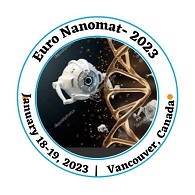
Marwa Ben Chobba
University of Sfax, Tunisia
Title: Ag-doped TiO2 nanoparticles as self-cleaning and antimicrobial agent: synthesis, characterization and use with PDMS as a nanocomposite protective coating.
Biography
Biography: Marwa Ben Chobba
Abstract
Water induces several deterioration mechanisms in porous stone materials. In addition to physical and chemical decay processes, water is essential for the growth of biodeteriogens, whose growth contributes to the stone artworks decay. Different approaches have been developed to protect heritage materials. Particularly, using nanomaterials exhibiting selfcleaning features has been considered an interesting and economical method to conserve valuable heritage material surfaces. TiO2 nanoparticles (NPs) have been extensively used for self-cleaning applications, particularly, cleaning and preventing colonization of heritage building surfaces. This study focuses on developing hydrophobic thin films to be used as protective coatings. The effects of NPs (TiO2) concentration in the binder matrix was evaluated and different mixtures were applied to the Lecce stone surfaces. The more suitable doping amount range was assessed based on chromatic variations and contact angle measurements. Next, the optimal formulations of Ag-doped TiO2 NPs mixed with PDMS as self-cleaning protective coatings were evaluated by different experimental analyses: colourimetric and static contact angle measurements, water capillary absorption and water vapour permeability tests. The microstructural and morphological features of thin films were investigated by optical microscope and SEM-EDS analyses. The mechanical properties of protective coatings were evaluated through Vickers microhardness and pencil hardness tests. Moreover, the self-cleaning properties of the coatings were evaluated by performing the photo-degradation test (MB used as an organic pollutant) and biological experiments were evaluated against a stabilized mixture composed of five microbial strains isolated from biodeteriorated building materials. The durability of the developed nanocomposite coatings was assessed after exposure to different ageing cycles (solar light, high humidity, and long-term microbial incubation.

